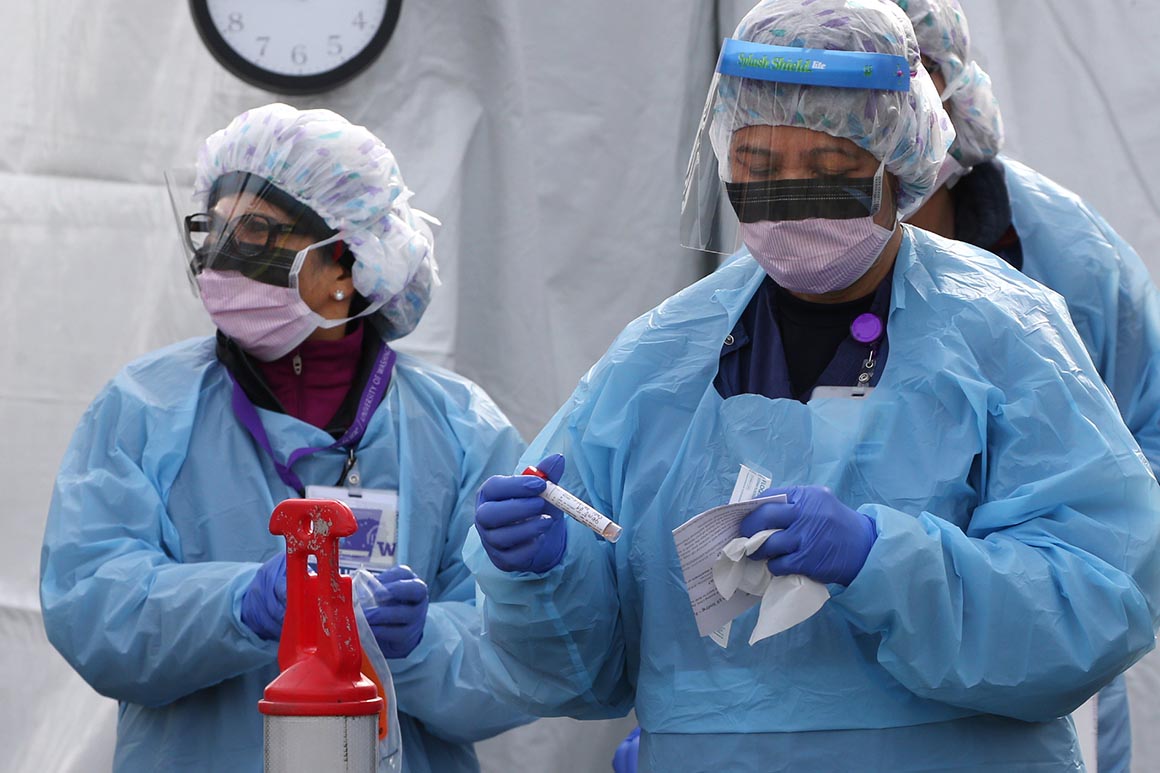
Since then, 19 states have voluntarily reported health care layoffs as a significant driver of their spike in unemployment insurance claims in the DOL’s past three weekly jobs reports. And nearly half of medical practices have temporarily furloughed staff, while another 22 percent have permanently laid off employees — a situation expected to worsen in the next month, according to the Medical Group Management Association, which surveyed 724 practices.
“It is unusual for health care workers to be feeling this level of job insecurity,” said Ani Turner, a co-director of sustainable health spending strategies at the nonprofit research center Altarum. “It just creates an added stress on top of everything else.”
And as hourly employees — like lab technicians and some nurses — see their time severely cut, some hospitals and clinics are furloughing lower-wage workers so they can file for unemployment instead of living with the uncertainty of barely being called in to work.
The health care layoffs come as more than 22 million Americans have filed for unemployment benefits in the past four weeks — a number economists say is almost certainly an undercount, given widespread issues workers face in submitting applications. But the layoffs in March mark only the fifth month since 1990 that the industry has shed any jobs at all, Turner noted.
Few patients want to go to the doctor during a pandemic, however, and many governors and the Trump administration are urging Americans to stay away from hospitals and health facilities unless it’s an emergency.
Some providers are working with patients to delay necessary but not emergency procedures, like knee replacements, while others are shutting down specialty practices like dermatology and plastic surgery to save costs while no patients are coming in. And it’s not always easy for medical personnel to shift from one setting or specialty to another.
“You can have hospitals that were actively seeking critical care nurses or respiratory therapists, or individuals with other skills that were critically needed in the care for Covid patients, at the same time they’re laying off staff whose skill sets are normally highly valued,” said Foster of the hospital association. “But because of the way in which we had to handle other non-Covid patients, those may not be needed right now, simply because we’ve had to shut down those services for awhile.”
Brian Kelly, the CEO of Women’s Healthcare Associates in the Portland, Ore., metro area, runs one such practice facing financial issues. Over the past few weeks, Kelly watched as revenue declined 50 percent. Last week, he furloughed 186 of the OB-GYN clinics’ 550 employees. Many had focused on services like mammograms that are being postponed.
During the 2008 recession, Kelly recalled furloughing two full-time employees, “so that doesn’t even come close to this,” he said.
Even large health systems now are grappling with reducing staff. Mayo Clinic, for example, a large nonprofit academic medical center, is planning temporary furloughs and pay reductions for some staff at the end of the month. Physicians won’t be furloughed, but beyond that, it’s unclear yet who and how many staff won’t come to work and for how long.
But unlike other sectors, the providers and industry experts alike are fairly optimistic that the sector will bounce back relatively quickly once the crisis subsides. The health care jobs lost now will return once businesses start to reopen and Americans return to daily life. It’s likely there will be a lot of pent-up demand for care that was delayed — both elective procedures and management of some chronic conditions.
“When the ability to go back to the provider exists, I think we will see a surge of those elective procedures that were delayed being rescheduled and driving the economy upwards within the health care system,” said Rick Kes, a health care senior analyst with RSM.
So far, just a handful of governors are allowing elective procedures to proceed again, and hospitals will be grappling with how to determine which to move forward with — and whether they have enough protective equipment like gowns and masks to start seeing more patients again but still be prepared for a potential influx of coronavirus patients.
Kes and others also noted that because the bulk of Americans receive health insurance through their employers, widespread job losses leaving significant numbers of people out of work and uninsured for months could lead to reduced demand for non-emergency care.
The pandemic has also driven a huge increase in telemedicine, allowing patients and providers to connect using technology in a way that previously had not been in wide use. If remote care remains popular in the future — and it may well — it could cut down on the number of administrative and other staff a practice needs.
But in the short term, a huge amount of uncertainty exists because so much depends on where the pandemic heads next, and whether communities that have already seen a peak could face another wave.
“The industry is in a living nightmare right now,” said Martha Gimbel, a labor economist with the philanthropic group Schmidt Futures. “At some point, it’s possible that workers in hospitals might lose their jobs, might have hours cut, might have to take pay cuts, at the same time that they’re fighting this virus.
“The whole thing,” she added, “is unspeakable.”
Source: politico.com
See more here: news365.stream






